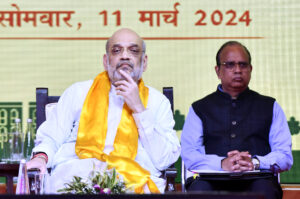Mumbai: How hospitals are going by the book for proper disposal of PPEs
[ad_1]
It is mandatory for every healthcare worker treating Covid-19 patients to use Personal protective equipment (PPE) kits in order to avoid running the risk of catching the virus.
Needless to say, thousands of such PPE kits are being used every day. But while a PPE kit can be a life saver, the same, if not disposed of properly after usage, can prove to be dangerous too. As it is a bio-waste, disposing it of calls for proper care. An India Today TV team visited the KEM hospital in Mumbai to find out about the process followed while disposing of a PPE kit.
Dr Hemant Deshmukh, Dean, KEM Hospital, said, “In KEM hospital, we use around 1,000 PPE kits daily on an average.” He said that the PPE kit includes not just the white gown but also the face-shields, goggles, face masks and the gloves. Since the face-shields, goggles and gloves are made of plastic, they are put in a separate bin and the gown in another bin.
This segregation is important and is done at the ward itself. “The PPE gown is used by all healthcare workers for safety purpose. They are collected at the wards – the point of usage – by the bio medical waste handlers. The white gown, specifically, is put in a yellow bag and then transported to a dedicated biomedical waste room. From this area all the yellow bags which are pre-treated with sodium hypochloride are collected by only authorised vendors. These vendors work with the Maharashtra Pollution Control Board. Once these yellow bags are collected, they are then disposed of by incineration or microwave sterilisation,” he added.
A resident doctor from the same hospital said, “We have had prior training on the usage and disposing of PPE kits. There are rules that have been set for this which we follow. For example, the yellow bag is mandatory for disposing of the kit and the rule is followed religiously by everyone.”
While that might sound impressive but the actual process for a doctor while taking off a PPE kit is indeed difficult and dangerous. That too when he has already spent more than 6 hours in the suit without tak-ing any break. Here’s what has to be done every time.
A PPE kit can only be removed in front of a trained observer/colleague to ensure that everyone is keeping a check and rules are followed. Waste containers have to be ready at the doffing areas. Hand hygiene then has to be observed on gloved hands.
A doctor has to lean forward while taking off the gown to ensure that he doesn’t contaminate his hands. The gown cannot be removed randomly. Once removed, it has to be rolled without touching the front area. Again, hand hygiene on gloved hands has to be performed. The outer pair of gloves then has to be removed and disposed of. Hand hygiene is again performed on gloved hands.
Face shield and goggles are then removed and again hand hygiene is performed. Thereafter the face mask is removed. Hand hygiene is performed again on gloved hands.
Gloves are then taken off and disposed of and hands are cleaned yet again.
The above rules are set by the World Health Organisation (WHO) and the rule chart is placed at the doffing area of the hospital for all to see and follow. City doctors treating Covid-19 patients say that the six hour plus shifts are tiring and suffocating but more challenging is the task of taking off and disposing of a PPE kit.
A resident doctor added, “One mistake on a particular day can be disastrous for you and your colleagues. So, we can’t afford to be lenient. Rules have to be followed at all costs.”
[ad_2]
Source link







